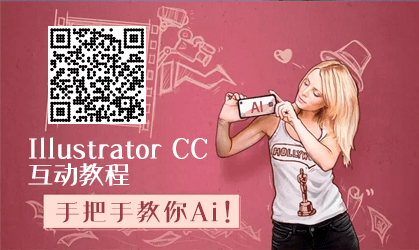设计师的10种范式转变
For $250, a business can pay a graphic designer to create a logo for their business. Or, for $10,000 a business can hire a graphic designer to form a design strategy that contextually places the business’s branding in a stronghold against the market it’s competing in. Businesses aren’t just paying more for the same thing, but for a designer to use specific skills, abilities, and knowledge in a strategic problem-solving way.
只需花$ 250,企业就可以付钱给平面设计师为企业创建徽标。 或者,企业可以花10,000美元聘请一名平面设计师来制定设计策略,从而根据上下文将企业的品牌定位在竞争中的据点之外。企业不仅为同一件事支付更多的费用,还需要设计师使用以策略性解决问题的方式掌握特定的技能,能力和知识。
To have a seat at the table, strategic graphic designers of the future need much more than refined craftsmanship in a technical process to be so valuable in the marketplace; obtaining a strategic skillset isn’t often found in through higher education, but elsewhere.
要在桌面上占有一席之地,未来的战略图形设计师需要的不仅仅是技术流程中的精湛Craft.io,以使其在市场上具有价值。 获得战略技能的机会并不常见于高等教育,而是在其他地方。
传统设计师图 (The Traditional Designer Graphic)
She is known as someone who works with a particular set of skills to reach a state of perfection from a design brief. Paul Rand, Milton Glaser, and Saul Bass are prime examples of traditional graphic designers. Their work is distinctively recognizable and they were hired for their refined aesthetics and reliable reputation.
她被称为具有特定技能的人,可以从设计简介中达到完美状态。 Paul Rand,Milton Glaser和Saul Bass是传统图形设计师的主要代表。 他们的作品广受赞誉,并因其精致的美学和可靠的声誉而受聘。
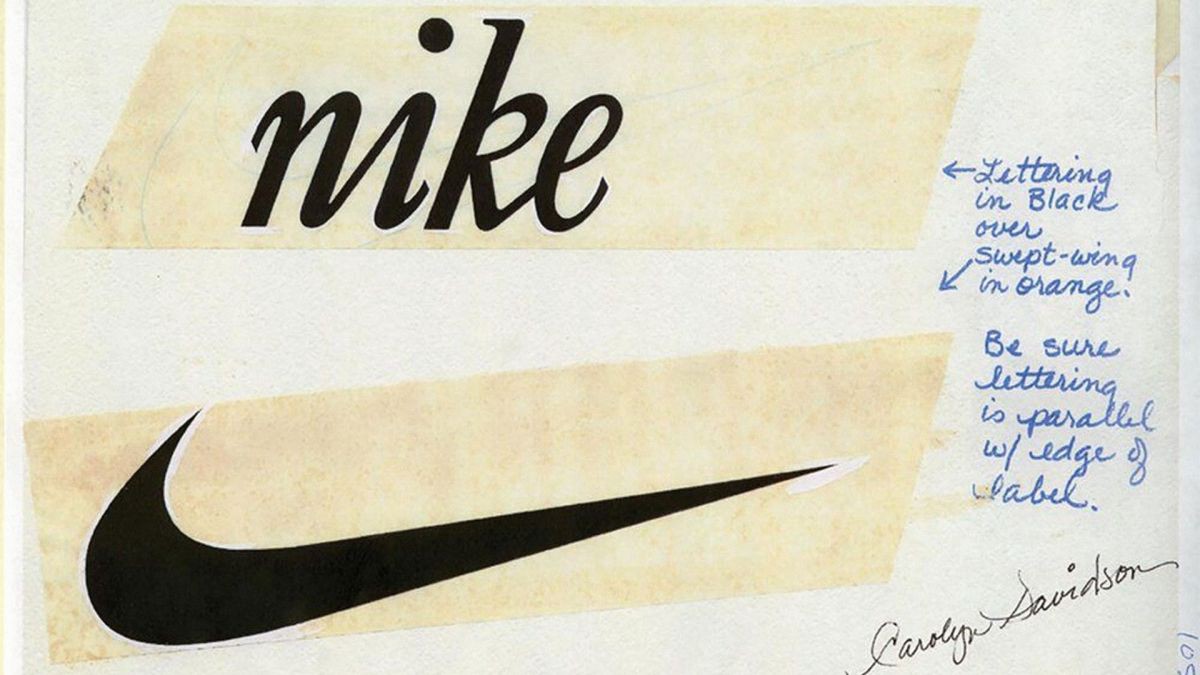
In 1971, Carolyn Davidson met Phil Knight, then an assistant professor at Portland State University who was starting a new sports shoe company. Davidson was a student at PSU making extra cash freelancing graphic design services to pay for oil painting classes at the university. Knight hired Davidson for $2 an hour to come up with a logo that would be placed on all the shoes. So, she created several logos, showed, them to Knight, who took a look, pointed at the swoosh mark, and said “We liked this one slightly more than the others”, paid Davidson $35 and both of them went on their way. Davidson continued to study painting while Knight founded Nike, a multi-billion dollar company. With only recognition for Davidson’s drawing abilities, she created an iconic logo that would become a branding masterpiece worth a fortune.
1971年,卡罗琳·戴维森(Carolyn Davidson)遇到了当时在波特兰州立大学担任助理教授的菲尔·奈特(Phil Knight),他正在创办一家新的运动鞋公司。 Davidson是PSU的学生,提供额外的现金自由图形设计服务,以支付大学的油画课的费用。 奈特以每小时2美元的价格聘请戴维森,想出一个徽标,该徽标可以贴在所有鞋子上。 因此,她创造了几个徽标,向奈特展示,向奈特看了一眼,指着耐克标志,并说:“我们比其他徽标更喜欢这个徽标”,付给戴维森35美元,两个徽标都继续使用。 戴维森继续学习绘画,而奈特创立了市值数十亿美元的耐克公司。 仅凭戴维森的绘画能力得到认可,她创造了一个标志性徽标,该徽标将成为值得发家的品牌杰作。
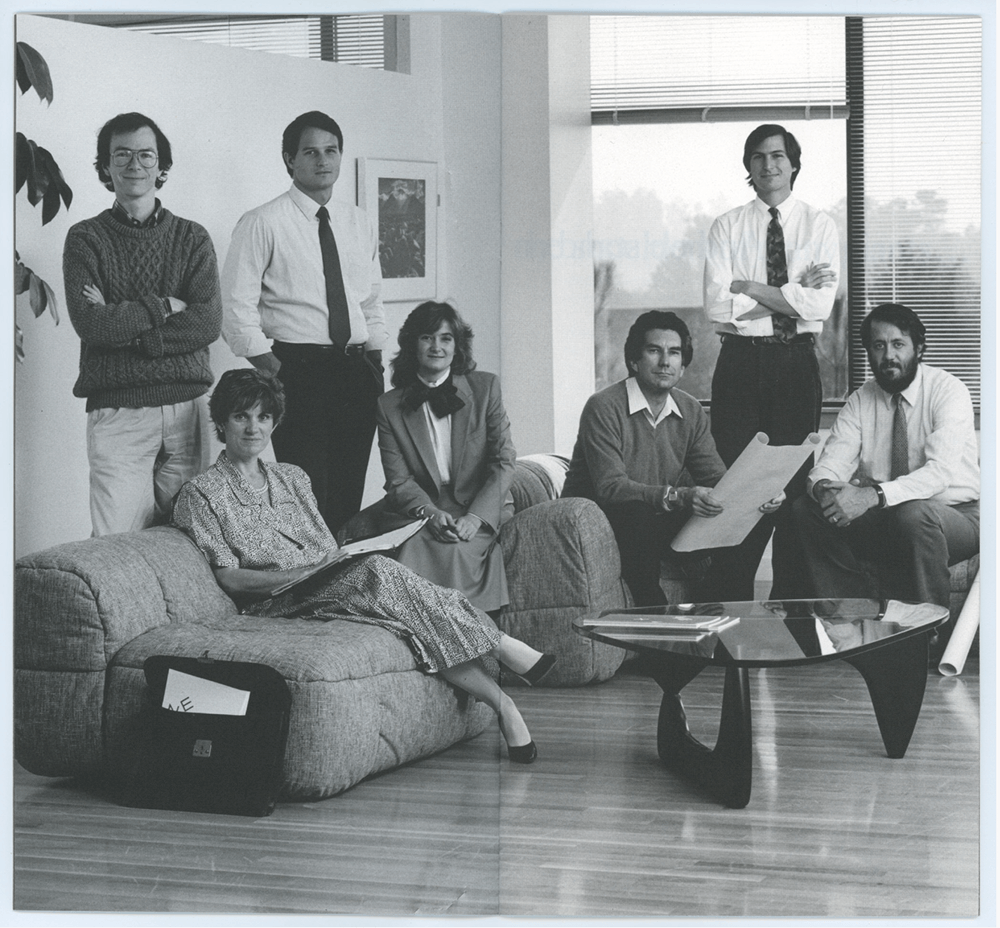
In 1993, Steve Jobs hired Paul Rand for $100,000 to create a logo for NeXT, Job’s business venture after being fired from Apple. Jobs asked Rand to design several logos, to which Rand replied,
1993年,史蒂夫·乔布斯(Steve Jobs)以10万美元的价格聘请了保罗·兰德(Paul Rand),为乔布斯(NeXT)的企业创建徽标。 乔布斯请兰德设计几个徽标,兰德回答说,
“No, I will solve your problem for you and you will pay me. You don’t have to use the solution. If you want options go talk to other people. But I’ll solve your problem for you the best way I know how, and you use it or not, that’s up to you — you’re the client — but you pay me.”
“不,我会为您解决您的问题,您会付钱给我。 您不必使用该解决方案。 如果您需要选择,请与他人交谈。 但是,我会尽我所能为您解决问题,无论您是否使用,这取决于您-您是客户-但您付钱给我。”
— Paul Rand, 1993
-保罗·兰德(Paul Rand),1993年

In 1996, Steve Jobs sold NeXT to Apple for $400 million.
1996年,史蒂夫·乔布斯以4亿美元的价格将NeXT卖给了苹果。
Now, a logo doesn’t represent the value of an entire company, but from these two stories, we learn of two different types of graphic designers: the graphic designer who understands their value and the graphic designer who does not.
现在,徽标并不能代表整个公司的价值,但是从这两个故事中,我们了解到两种不同类型的图形设计师:了解其价值的图形设计师和不了解其价值的图形设计师。
未来的平面设计师 (The Graphic Designer of the Future)
When clients hire graphic designers to solve problems, graphic designers are handed design briefs (the client’s understanding of the problems). The graphic designer of the future starts from the design brief to a research strategy to investigate the client’s market, the user‘s needs, and to strategize a path toward solving the problem before creating anything.
当客户雇用图形设计师解决问题时,图形设计师会收到设计摘要(客户对问题的理解)。 未来的图形设计师将从设计简介到研究策略,以调查客户的市场,用户的需求,并在创建任何东西之前制定解决问题的策略。
Kees Dorst, professor at the University of Technology in Sydney wrote:
悉尼科技大学教授Kees Dorst写道:
“When people started trying to understand design … the first model they devised was of design as a problem solving process.”
“当人们开始尝试理解设计时……他们设计的第一个模型就是将设计作为解决问题的过程。”
To become recognized for problem-solving processes, the graphic designer must take it upon themselves to understand different strategies for doing so. The Four Orders of Design is a structure that helps us understand the hierarchy of design, developed by Richard Buchanan. Deeper into his writing, he explains design is a process that involves systematic disruption and interactions between users before considering what is designed… meaning the results of effective design are equally as valuable as the tangible deliverable.
为了获得解决问题的过程的认可,图形设计师必须承担起自己的责任,以了解解决问题的不同策略。 理查德·布坎南(Richard Buchanan)开发的“设计的四个顺序”是一种结构,可以帮助我们理解设计的层次结构。 在他的著作的更深层次上,他解释了设计是一个过程,涉及系统的中断和用户之间的交互,然后再考虑设计的内容……这意味着有效的设计结果与可交付的成果同等重要。

Design isn’t just a person at a desk pumping out logos. It’s a process where the graphic designer solves problems that disrupt systems in collaboration with the client and the end-user.
设计不仅仅是在办公桌旁抽出徽标的人。 在这个过程中,图形设计师与客户和最终用户协作解决了破坏系统的问题 。
Tony Golsby-Smith, professor at Alphacrucis College put it this way:
Alphacrucis College教授Tony Golsby-Smith这样说:
“Design is the human power of conceiving, planning, and making products that serve human beings in the accomplishment of their individual and collective purposes.”
“设计是构思,规划和制造为人类实现个人和集体目的服务的产品的人力。”
移情与合作 (Empathy & Collaboration)
So far, we understand Paul Rand and Carolyn Davidson as graphic designers who work to satisfy a design brief. If we are to find graphic designers who work collaboratively with the client, we need a new strategy that works systematically to disrupt systems and considers interactions between users.
到目前为止,我们了解Paul Rand和Carolyn Davidson是致力于满足设计简介的图形设计师。 如果要找到与客户合作的图形设计师,我们需要一种新的策略,该策略可以系统地破坏系统并考虑用户之间的交互。
Design Thinking is famously known as a collaborative problem-solving strategy championed by IDEO and Stanford’s Hasso Plattner Institute of Design (d.school) that emphasizes not graphic designers, but the end-user… this fits the bill.
设计思维因IDEO和斯坦福大学的Hasso Plattner设计学院(d.school)倡导而闻名,它是一种协作解决问题的策略,该策略不强调图形设计师,而是最终用户……这很符合要求。
Empathy is the driving force of Design Thinking, requiring everyone involved in the strategy to investigate human needs before ever solving the problem at hand. To be empathetic, people must seek to understand one another through mutual collaboration. Collaboration means designing together; not alone. To maximize the potential of Design Thinking, each person collaborating on the problem should have a different worldview, knowledgebase, and skillset to contribute to a more holistic solution. Therefore, the diversity of the group becomes as equally valuable as expertise in the group dynamic.
移情是设计思维的动力,要求参与战略的每个人在解决眼前的问题之前都要调查人类的需求。 要有同理心,人们必须寻求通过相互合作相互了解。 协作意味着一起设计; 不是一个人。 为了最大程度地发挥设计思维的潜力,每个在问题上进行协作的人都应该拥有不同的世界观,知识库和技能,以提供更全面的解决方案。 因此,团队的多样性与团队动态的专业知识同等重要。
探索策略 (Strategies of Exploration)
Beyond empathy, collaboration, and diversity of the group collaborating on a problem… graphic designers leading the process must have a library of design strategies to pull from to find solutions in linear and non-linear ways.
除了同理,团队协作和在问题上进行协作的多样性外,领导过程的图形设计师还必须拥有一个设计策略库,可以从中找到线性和非线性方式的解决方案。
Terry Winograd, professor of Computer Science at Stanford University writes:
斯坦福大学计算机科学教授Terry Winograd写道:
“There is no direct path between the designer’s intention and the outcome. As you work a problem, you are continually in the process of developing a path into it, forming new appreciations and understandings as you make new moves.”
“设计师的意图和结果之间没有直接的道路。 当你的工作出了问题,你是不断在发展的道路进去,形成新的升值和谅解为您做出新的动作的过程 “。
The emphasis on process, not the design brief, is important here. The graphic designer must be capable of leading strategies and processes even if they’re messy. And, they will be messy. But as a facilitator of the process, these strategies become the tools the graphic designer uses to lead.
在这里,重点在于Craft.io而不是设计简介。 平面设计师即使是凌乱的,也必须能够领导战略和流程。 而且,它们将变得凌乱。 但是,作为过程的促进者,这些策略成为了图形设计师用来领导的工具。
Throughout any of these processes, the graphic designer keeps their attention on the why and how; not the product. In doing so, the graphic designer gathers insights to explore the psychology behind what the intended audience or end-user needs. Strategies for finding these insights are not traditionally taught in higher education design programs but they are finding their way into programs. As a result, the responsibility of having these strategies ready is still on the graphic designer, which can be learned through workshops at IDEO, books, graduate-level classes at universities, and from experience working in the field.
在所有这些过程中,图形设计师都将注意力集中在原因和方式上。 不是产品。 在这样做的过程中,图形设计师会收集见解,以探究目标受众或最终用户需求背后的心理。 传统上,在高等教育设计课程中不会教授发现这些见解的策略,但它们正在进入课程。 结果,准备好这些策略的责任仍然在图形设计师身上,可以通过IDEO的研讨会,书籍,大学的研究生班以及在该领域的工作经验来学习。
可交付成果 (Deliverables)
When strategy becomes a primary responsibility of a graphic designer, deliverables look different. Graphic Design is largely known as a service industry where clients pay for typography, photography, and illustration. These deliverables are all visual. In the scope of Design Thinking and the Four Orders of Design, the deliverables of strategy & research are insights that look like excerpts from interviews, analyzed data reports, survey results, customer user journey maps, and the like. The difference between delivering visual products and insights should not be confused as any less work. The value of the insights guides decision-making, so the return on investment (ROI) is huge. All of these deliverables should be charged from the grahpic designer to the client with a mutual understanding of their value contributing to solving the client’s problems.
当战略成为平面设计师的首要职责时,可交付成果看上去就不同了。 平面设计在很大程度上被称为服务行业,客户需要支付版式,摄影和插图费用。 这些可交付成果都是可视的。 在“设计思维”和“设计的四个顺序”的范围内,战略和研究的交付物是洞察力,看起来像是访谈摘录,分析的数据报告,调查结果,客户用户旅程图等。 交付视觉产品和洞察力之间的区别不应因为工作量少而混淆。 洞察力的价值可指导决策,因此投资回报(ROI)巨大。 所有这些可交付成果都应由图形设计者向客户负责,并应相互理解其价值,以帮助解决客户的问题。

定价,谈判和可持续性 (Pricing, Negotiating, and Sustainability)
Charging clients for strategy and research can be foreign for graphic designers, so understanding a variety of pricing models, how to negotiate, and working toward a goal of sustainability can help.
对图形设计师来说,向客户收取策略和研究费用可能是陌生的,因此了解各种定价模型,如何进行谈判以及为实现可持续发展目标而努力会有所帮助。
There are 5 models of pricing:
有5种定价模式:
1. Cost-based pricing is frequently used to maximize profits and requires graphic designers to add up all their costs associated with offering a design and adding on a percentage for profit.
1.基于成本的定价通常用于最大化利润,并且要求图形设计师将与提供设计相关的所有成本相加,并增加一定百分比的利润。
2. Fixed pricing charges the client a set price for a service offered, regardless of how many hours are expended or how many resources are involved.
2.固定定价向客户收取所提供服务的固定价格,而与花费多少小时或涉及多少资源无关。
3. Hourly pricing requires graphic designers to charge time and expenses for designs in an invoice to the client of all expenses required (such as mileage to client’s business, paper costs, etc.) and for each hour of work at an hourly price depending on the services purchased.
3.每小时定价要求平面设计师在发票中向客户收取设计所需的时间和费用,包括所需的所有费用(例如与客户业务的里程,纸张成本等),以及每小时的工作时间,具体取决于每小时购买的服务。
4. Performance-based pricing required graphic designers to invoice clients based on the performance of the design delivered.
4.基于性能的定价要求图形设计师根据交付的设计的性能向客户开具发票。
5. Value-based pricing requires graphic designers to determine a price based on the perceived value clients will receive from the design.
5.基于价值的定价要求图形设计师根据客户将从设计中获得的感知价值确定价格。
Of these five models, value-based pricing most accurately represents what is being purchased from the graphic designer because the problems being addressed are understood systematically. (Liozu, S., Hinterhuber, A., Boland, R., Perelli, S.)
在这五个模型中,基于价值的定价最准确地代表了要从图形设计师那里购买的价格,因为已系统解决了要解决的问题。 (Liozu,S.,Hinterhuber,A.,Boland,R.,Perelli,S.)
Beyond pricing, graphic designers must be adept at negotiating prices to make a profit, which provides the value of their work. Having a framework that communicates a process that can be trusted by a client is more important than a portfolio. (Enns, B.) While the portfolio provides a body of work representative of the past, an articulated design process promises new results that shouldn’t be like anything else since the results are tailored specifically to the client’s intended audience.
除了价格之外,图形设计师还必须善于通过价格谈判来获利,以提供其工作的价值。 具有一个可以传达客户可以信任的流程的框架比投资组合更为重要。 (Enns,B.)虽然投资组合提供了过去的工作成果,但明确的设计过程可以保证产生新的结果,这种结果与其他任何东西都不一样,因为结果是专门为客户的目标受众量身定制的。
Finally, a sustainable business practice is the most important principle to remember. Becoming a sustainable graphic designer means business is continuous and reliable while finances are operating on a profit margin. Graphic designers are often driven by passion not profit, but keeping a business healthy and thriving requires a reciprocal relationship between the graphic designer and client. If designers deliver valuable results, clients will refer designers to other potential clients.
最后,可持续的商业惯例是最重要的原则。 成为一名可持续的平面设计师意味着企业持续不断且可靠,而财务则以利润为基础。 图形设计师通常是由激情而不是利润驱动,但是保持业务健康发展需要图形设计师和客户之间的对等关系。 如果设计师能提供有价值的结果,客户将把设计师推荐给其他潜在客户。
Good work will bring more good work.
好的工作会带来更多的好的工作。
超越基于客户的工作 (Beyond Client-Based Work)
There will always be dips in business. When graphic designers are not working with clients, they can be networking to build new partnerships, but they can also utilize their skills and abilities to build additional streams of revenue to supplement their income.
总会有生意下滑。 当图形设计师不与客户合作时,他们可以通过网络建立新的合作伙伴关系,但他们也可以利用自己的技能和能力来建立更多的收入来源以增加收入。
‘Passive income’ is a popular topic; it’s debatable whether they are effective or not. Creating an online store that sells digital or physical products is a route that requires work on the front end but it serves the end goal of marketing their work and serving as a useful or beautiful product that is enjoyed by others. It’s even possible to sell products to other graphic designers. Dustin Lee makes six figures selling Photoshop actions, Illustrator tools, brushes, textures, patterns, etc. through his web store Retro Supply.
“被动收入”是一个受欢迎的话题; 它们是否有效尚有争议。 创建一个销售数字或物理产品的在线商店是一条需要前端工作的途径,但它最终目的是营销他们的工作并成为其他人喜欢的有用或精美的产品。 甚至可以将产品出售给其他图形设计师。 达斯汀·李(Dustin Lee)通过他的网上商店Retro Supply卖出了六个人物来出售Photoshop动作,Illustrator工具,画笔,纹理,图案等。
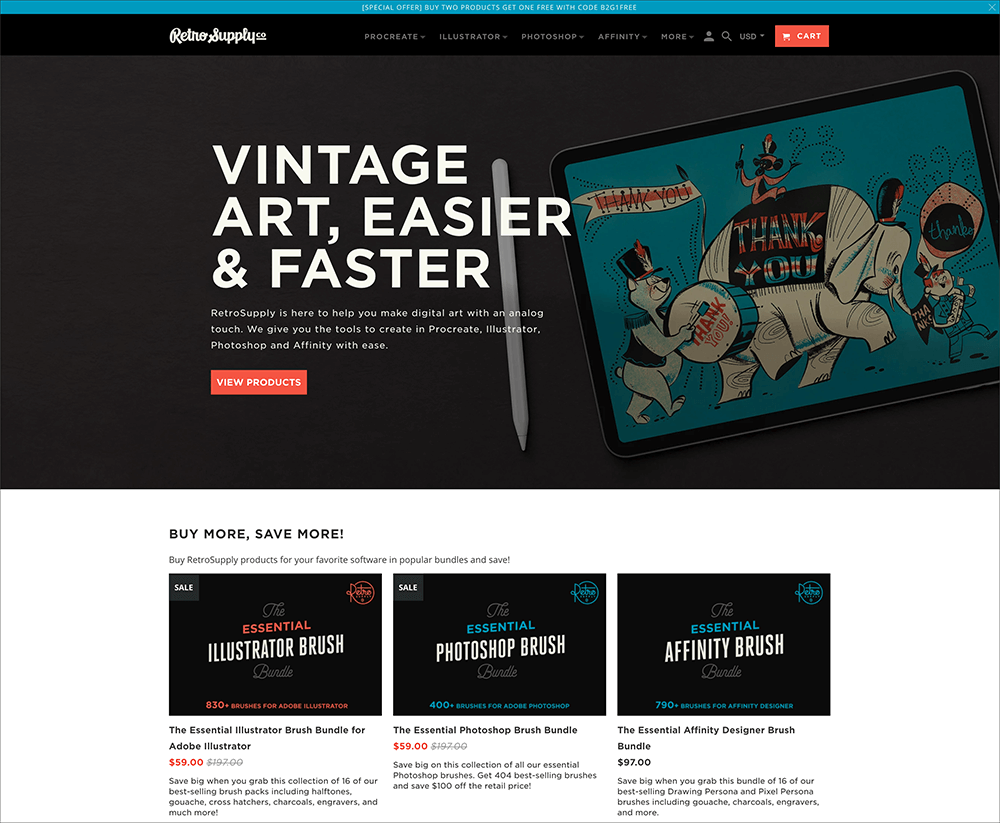
Developing online classes through services such as Skillshare, Lydia, and Udemy allows graphic designers to teach profitable skills to other graphic designers. Graphic designer Ohn Mar earns $1,250 — $3,500 per month from her classes on Skillshare. As a result, sharing these skills also builds credibility for the graphic designer and their ability to lead others through processes.
通过Skillshare,Lydia和Udemy等服务开发在线课程,图形设计师可以向其他图形设计师传授可盈利的技能。 平面设计师Ohn Mar每月在Skillshare上的课程可赚取$ 1,250-$ 3,500。 结果,共享这些技能也为图形设计师建立了信誉,并增强了他们带领他人进行流程的能力。
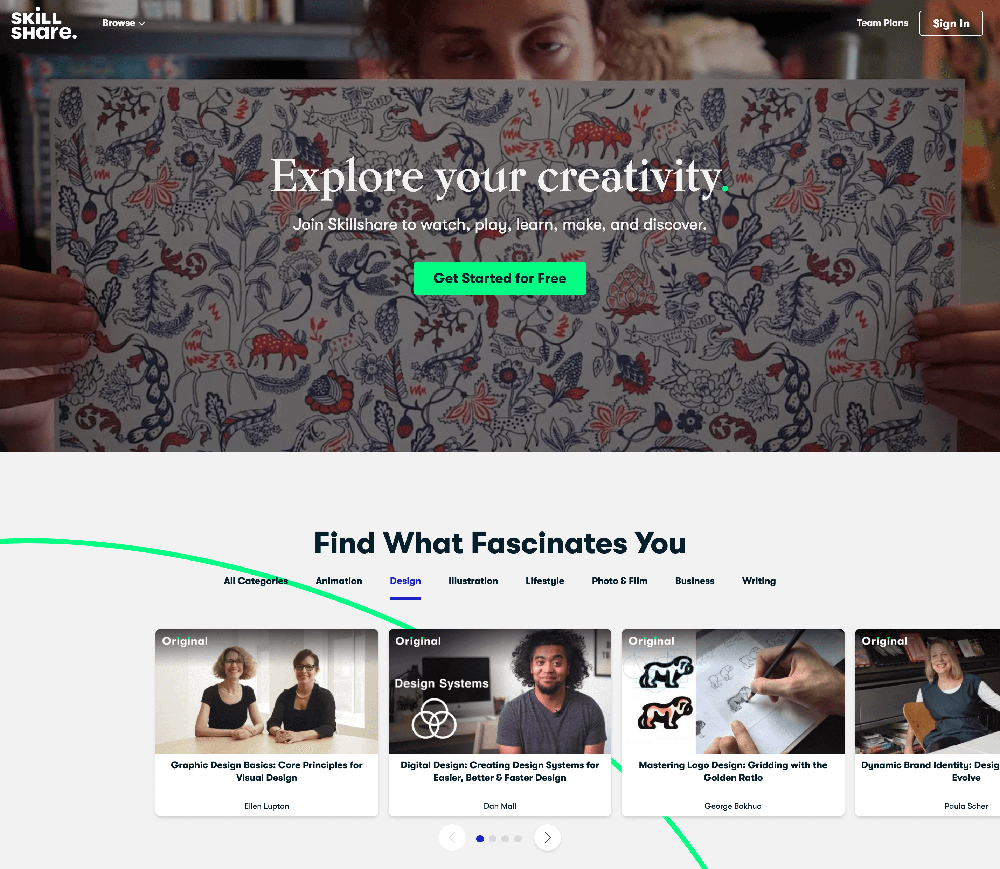
Hosting podcasts or videocasts using streaming services also creates the opportunity to teach others, but hosting a show that creates or contributes to the broader design community is easier than ever before. Debbie Millman has been posting “Design Matters”, a podcast where she interviews a different graphic designer every episode for over 14 years.
使用流媒体服务托管播客或视频广播也为其他人提供了学习的机会,但是托管一个能够为更广泛的设计社区做出贡献的节目比以往任何时候都容易。 黛比·米尔曼(Debbie Millman)一直在播出“设计事项”(Design Matters),这是一个播客,她在每集节目中都采访了一位平面设计师超过14年。
The income created by initiating multiple streams of revenue can pay off in the long run and may require little maintenance from the graphic designer. As these ventures are established, it’s worth noting the earlier and more strategic graphic designers initiate these ventures, the more they will make in the long run and could exponentially cause the graphic designer to become more valuable to clients.
从长期来看,通过启动多种收入来源创造的收入可以得到回报,并且图形设计人员几乎不需要维护。 随着这些合资企业的建立,值得注意的是,越早且更具战略意义的图形设计师发起这些合资企业,从长远来看,他们将获得越多的收益,并可能成倍地增加图形设计师对客户的价值。
谋生 (Making a Living)
It turns out, graphic designers can still make a good living shipping design; not research & strategy. Aaron Draplin, David Carson, and James Victore are successful in their own right and do quite well without offering research and strategy services. Ultimately, if research & strategy are not services a graphic designer wishes to offer, they’re working in a niche market.
事实证明,图形设计师仍然可以做出良好的生活设计。 不是研究和策略。 亚伦·德雷普林(Aaron Draplin),戴维·卡森(David Carson)和詹姆斯·维克多(James Victore)本身都是成功的,并且在不提供研究和策略服务的情况下做得很好。 最终,如果平面设计师不希望提供研究和策略服务,那么他们将在利基市场工作。
The same goes for clients, as well— clients may not want to hire a graphic designer for strategy, but a niche graphic designer who delivers a specific kind of design. In this case, the specialist is more valuable than the generalist.
客户也一样。客户可能不想雇用平面设计师来制定策略,而是要提供特定设计的利基平面设计师。 在这种情况下,专家比通才更有价值。
Today, there are local and international markets for selling design services. Websites like 99designs, Toptal, and Upwork have created a marketplace of graphic designers who share their experience, education, specialties, and portfolios and can be hired for specific services and publicly reviewed later by the client. This makes it easy to start a design practice by plugging into a market.
如今,有本地和国际市场可以出售设计服务。 诸如99designs,Toptal和Upwork之类的网站已经创建了图形设计师的市场,这些人可以分享他们的经验,教育,专长和作品集,可以租用特定的服务,并在以后由客户公开审查。 这样可以很容易地通过进入市场来开始设计实践。
结论 (Conclusion)
The field of Design will continue evolving as new theories and strategies are developed over time. To move from a traditional graphic designer to the graphic designer of the future, 10 paradigm shifts can help:
随着时间的流逝,随着新的理论和策略的发展,设计领域将继续发展。 要从传统的平面设计师转变为未来的平面设计师,可以进行10种模式转变:
1. Discover problems before creating deliverables
1.在创建可交付成果之前发现问题
2. Investigate human needs with a blank slate
2.用空白板调查人类需求
3. Excel at collaboration
3.精通协作
4. Lead the Design Thinking process
4.领导设计思维过程
5. Charge clients for the entire design process
5.向客户收取整个设计过程的费用
6. Utilize a value-based pricing model
6.利用基于价值的定价模型
7. Negotiate using a reliable framework.
7.使用可靠的框架进行谈判。
8. Invest early in passive income ventures.
8.尽早投资于被动收入企业。
9. Deliver quality work sustainably.
9.持续交付高质量的工作。
10. Assess the client’s needs early on.
10.尽早评估客户的需求。
讨论区 (Discussion)
At the end of the day, the client is still left with a decision to hire a graphic designer who’s charging $35 for a logo or a graphic designer who’s charging $10,000 design strategy that guides the deliverables. As the field evolves and becomes more recognized for processes like Design Thinking and the utilization of the Four Orders of Design, its demand and value will increase over time for businesses who seek such transformative and effective practices. Graphic designers who choose not to practice these powerful processes will be left in a niche market and graphic designers aren’t bad or better — but, traditional in historical context because their peers will have already moved into the future.
归根结底,客户仍然可以决定聘请一位平面设计师,每位设计师收取35美元的徽标费用,或者聘请一位平面设计师,收取10,000美元的指导可交付成果的设计策略。 随着该领域的发展以及对设计思维和设计四阶的利用等过程的认可,对于寻求这种变革性和有效实践的企业,其需求和价值将随着时间的流逝而增加。 选择不实践这些强大流程的图形设计师将留在一个小众市场中,图形设计师并没有坏的或更好的习惯,但是在历史背景下还是传统的,因为他们的同行们已经进入了未来。
参考书目 (Bibliography)
- Dorst, Kees. Notes on Design: How Creative Practice Works. BIS Publishers, 2017.基斯特,多斯特。 设计注意事项:创作实践的工作原理。 BIS出版社,2017年。
- Enns, B. (2010). The win without pitching manifesto. RockBench Publishing Corp.恩恩斯(2010)。 不投宣言的胜利。 RockBench Publishing Corp.
Golsby-Smith, T. (1996). Fourth Order Design: A Practical Perspective. The MIT Press.
Golsby-Smith,T.(1996)。 四阶设计:实践视角 。 麻省理工学院出版社。
- Kees Dorst, Notes on Design: How Creative Practice Works, 2017Kees Dorst,《设计笔记:创意实践的方式》,2017年
Liozu, S., Hinterhuber, A., Boland, R., Perelli, S. (2012). The Conceptualization of Value-Based Pricing in Industrial Firms. Journal of Revenue and Pricing Management: Vol. 11, 1, 12–34.
Liozu,S.,Hinterhuber,A.,Boland,R.,Perelli,S.(2012年)。 工业企业中基于价值的定价的概念化。 收入与定价管理杂志:第一卷。 11、1、12–34。
Muratovski, G. (2016). Research for designers. Los Angeles: SAGE.
Muratovski,G.(2016年)。 设计师研究 。 洛杉矶:SAGE。
- Winograd, Terry. Bringing Design to Software. Addison-Wesley Publishing, 1996.特里·威诺格勒。 将设计带入软件。 Addison-Wesley出版社,1996年。
Joshua Hoering is a writer, designer, educator, artist, and speaker based in Chicago, Illinois. He’s currently working on an MFA in Graphic Design & Visual Experience at the Savannah College of Art & Design. More of Joshua: Twitter, Instagram, Pinterest, Facebook, and LinkedIn
Joshua Hoering是 伊利诺伊州芝加哥市 的 作家 , 设计师 , 教育家 , 艺术家 和 演讲者 。 他目前在萨凡纳艺术与设计学院从事平面设计和视觉体验的硕士学位。 约书亚的更多内容: Twitter , Instagram , Pinterest , Facebook 和 LinkedIn


